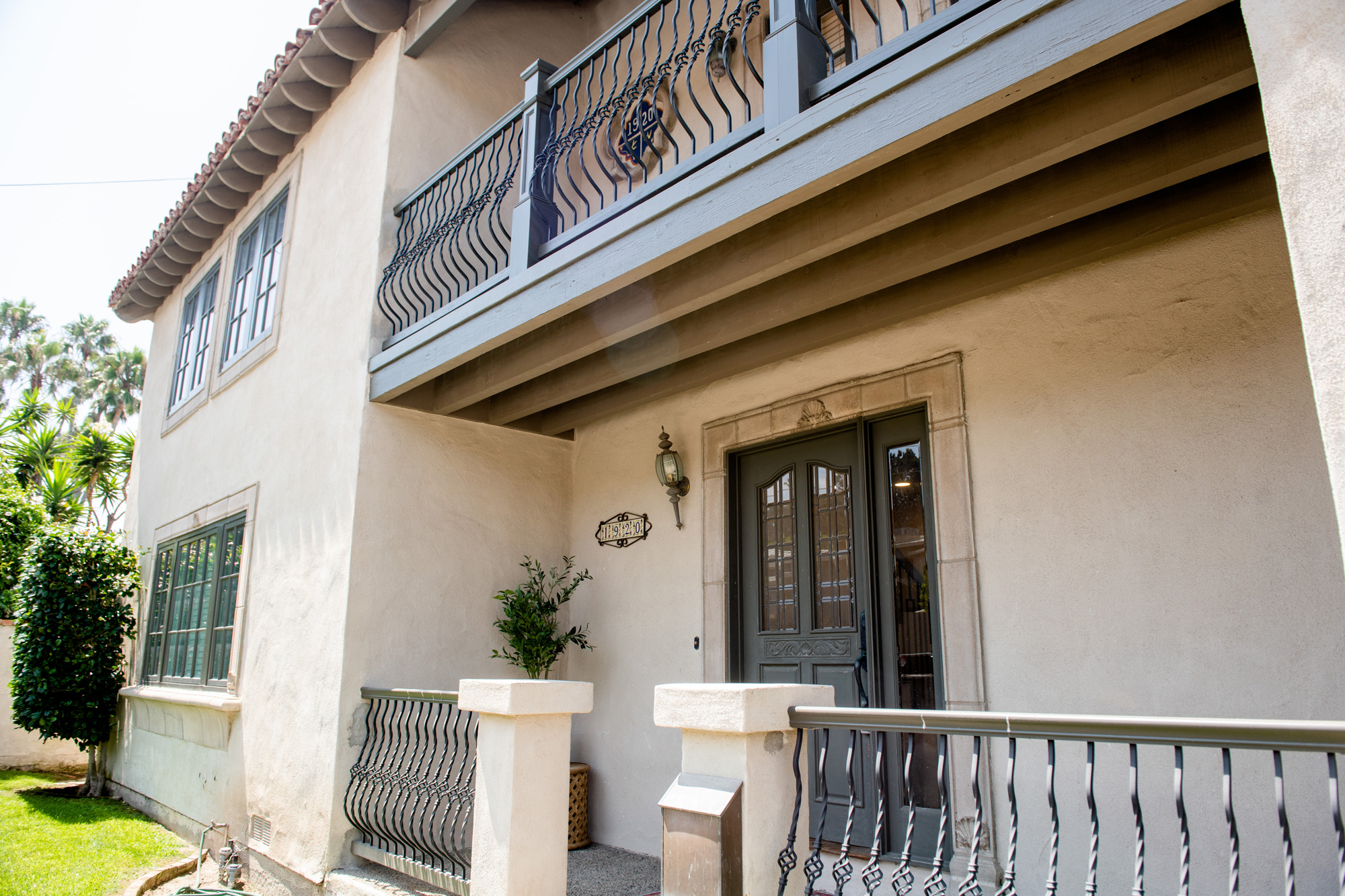
Spanish Colonial homes are a quintessential part of San Diego’s architectural landscape, with historical influences and distinct design features from a bygone era. Renovating these homes requires a delicate balance between preserving their unique character and integrating modern amenities to create a comfortable living space.
This guide on renovating Spanish Colonial homes in San Diego will help you navigate the process, from understanding their history and design elements to selecting the right materials and techniques to bring these beautiful homes back to life.
Spanish Colonial homes emerged in the early 20th century and were inspired by the classic adobe structures and mission churches of California’s early colonial history. Red-tile roofs, white stucco walls, intricate wrought ironwork, and decorative tilework characterize these homes.
Whether you are renovating to maintain your home’s original charm or to bring new life to a historic property in San Diego’s Balboa Park or Point Loma Theosophical District, it is essential to pay close attention to the architectural details and preservation requirements for these remarkable homes.
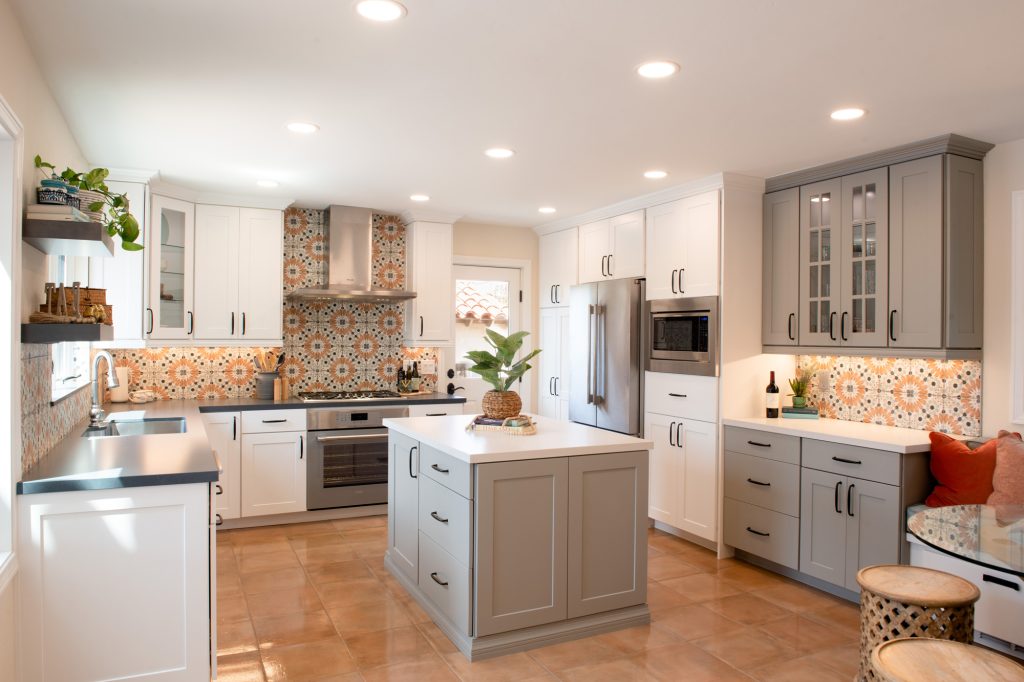
When renovating a historic Spanish Colonial home in San Diego, it’s crucial to thoroughly understand the architectural style. Spanish Colonial homes have origins dating back to the Spanish conquistadors and are characterized by their thick stucco-clad walls, wood support beams, flat roofs, inner courtyards, and terracotta tiles. These homes are found predominantly in neighborhoods such as La Jolla, Rancho Santa Fe, Point Loma, National City, Mission Hills, La Mesa, and Kensington.
As you embark on your home remodeling project, it’s essential to identify the elements that make your home uniquely Spanish Colonial. Begin by examining the exterior of your home. Spanish Colonial houses typically feature white stucco walls accented with wooden doors and windows. The red roof tiles are another staple of this style, offering a beautiful contrast to the clean, white walls.
Spanish-style homes often include an inner courtyard, a space that serves not only as a central gathering area but also provides natural light and ventilation. This feature adds a sense of privacy while still offering a connection to outdoor living spaces. Courtyards often have lush landscaping, fountains, or seating areas where residents can relax and enjoy the temperate San Diego climate.
Inside your Spanish Colonial home, you’ll likely find heavy wood beams that span the ceilings, lending a rustic charm to the interior. These beams, often combined with intricate detailing, contribute to the rich atmosphere of your home. Flooring in Spanish-style homes typically consists of terracotta or Saltillo tiles, sometimes with colorful accents.
It’s also essential to recognize the variety of Spanish Colonial styles. You may encounter the Spanish Colonial Revival style, which emerged in the early 20th century and shares many characteristics with its predecessor – the Spanish Colonial style. Spanish Eclectic homes are another related style you might come across, offering a more contemporary take on the original design elements.
As you plan your renovation, be sure to honor the history and architectural integrity of your Spanish Colonial home. By preserving its distinct features and incorporating modern updates that blend seamlessly with the existing design, you’ll create a functional and stylish living space true to its roots.
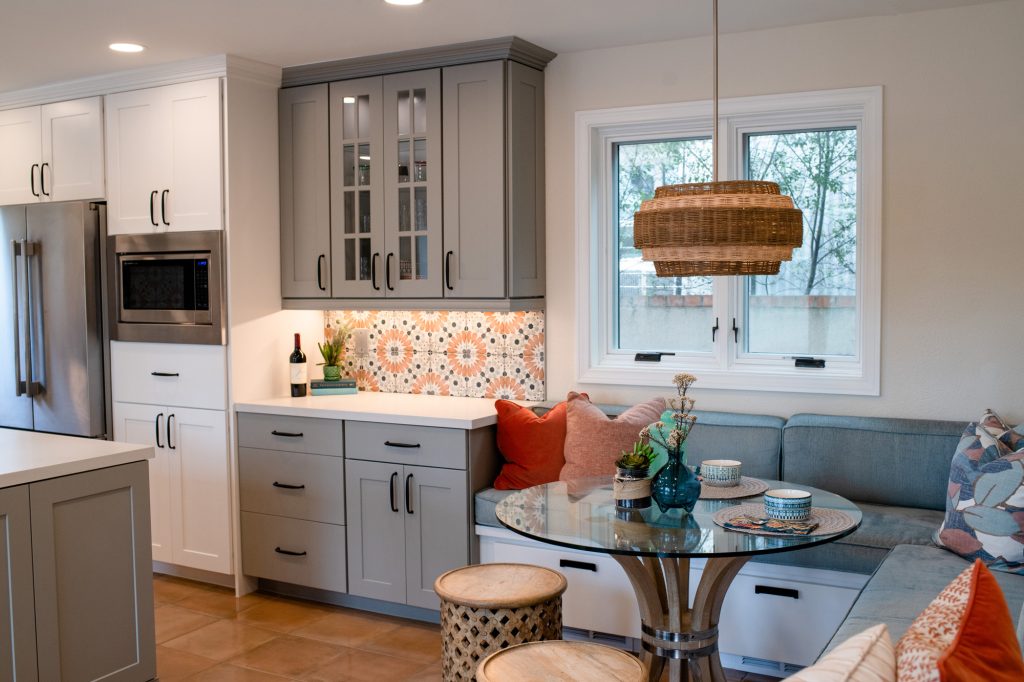
San Diego is a city with diverse architectural styles, and one of the most prominent styles you’ll come across is the Spanish Colonial Revival. This style gained popularity after the Panama-California Exposition in Balboa Park in 1915, and it can be primarily found in well-known neighborhoods such as Point Loma, La Jolla, Mission Hills, Kensington, and Coronado, among others.
Exploring San Diego, you will discover many Spanish Colonial homes in communities like North Park, Golden Hill, and Downtown San Diego. Features like thick stucco-clad walls, wood support beams, flat roofs, inner courtyards, and terracotta tiles characterize these homes. Additionally, some areas, such as Rancho Santa Fe and Bankers Hill, may have a more prominent presence of these architectural marvels.
While searching for the perfect historic home in San Diego, it’s also important to be aware of other neighborhoods like National City, Normal Heights, Mt. Soledad, and Sherman Heights, which offer unique and charming Spanish Colonial homes. Each area has its distinct atmosphere, and you may find just the right setting for your dream home renovation project.
When renovating your Spanish Colonial home in San Diego, you must pay special attention to maintaining the classic architectural elements and preserving its historical charm. The city offers many resources, including professionals with experience working on such homes, allowing you to create an updated living space while respecting the legacy and beauty of the Spanish Colonial style.
Remember that renovating a Spanish Colonial home in San Diego is not just about updating the aesthetics but also about appreciating the history and architectural significance that these homes bring to the city’s character. So, take your time to carefully plan your renovation project and trust in the guidance of experts who understand the unique features of these historic homes.
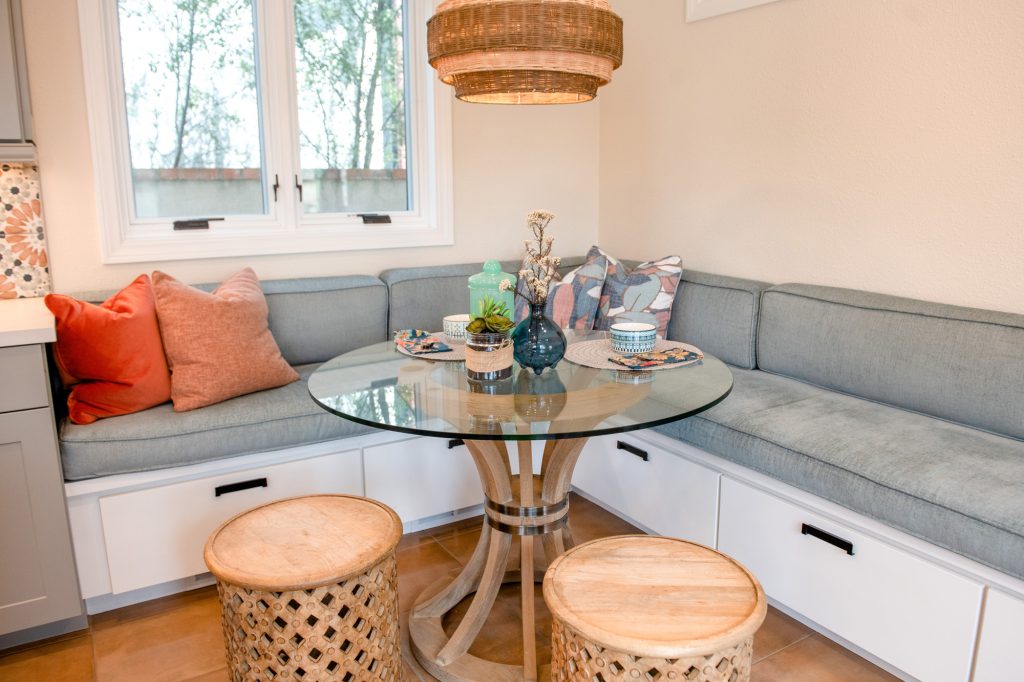
When renovating a Spanish Colonial home in San Diego, it’s essential to understand the key design elements and features that make these homes unique and special. In this section, we will explore the most common features of Spanish Colonial homes to help you plan and execute your renovation project.
One of the most noticeable features of a Spanish Colonial home is the use of white stucco on the exterior walls. White stucco adds a clean and elegant look to the house and helps keep the interior cool during hot summers. As you plan your renovation, consider maintaining or restoring the white stucco walls to preserve the authentic Spanish Colonial aesthetic.
Spanish Colonial homes often have arched doorways and large, multi-pane windows that provide plenty of natural light. These design elements create a sense of openness and connection to the outdoors. When renovating your home, consider maintaining or adding arched doorways and windows to enhance the overall design and charm of the space.
Courtyards are another common feature of Spanish Colonial homes. These private outdoor spaces offer a calm, serene retreat to enjoy the beautiful San Diego weather. As you plan your renovation, consider incorporating a courtyard into your design to embrace the Spanish Colonial style and provide an inviting outdoor living area for your family and guests.
Inside your Spanish Colonial home, you’ll likely find a fireplace as the central focal point of the living area. These fireplaces are typically made of brick or stone and serve as functional and decorative elements. In your renovation, consider maintaining or upgrading the fireplace to sustain the cozy and warm atmosphere of the home.
The interior design of Spanish Colonial homes often features exposed rafters and rustic wooden elements. These details add character and warmth to the space. Incorporating exposed rafters and rustic wood elements into your renovation can help you retain the charm and authenticity of your Spanish Colonial home.
Lastly, consider the overall interior design of your renovated space. Spanish Colonial homes often showcase a mix of rustic and elegant elements, with warm colors and rich textures. Let this design theme guide your furniture, lighting, and kitchen remodel selections in your renovation project.
By understanding Spanish Colonial homes’ key features and design elements, you can plan a renovation that stays true to the unique character of these beautiful San Diego residences while meeting your personal design preferences and needs. Enjoy the process and create a space that celebrates the timeless charm of the Spanish Colonial style.
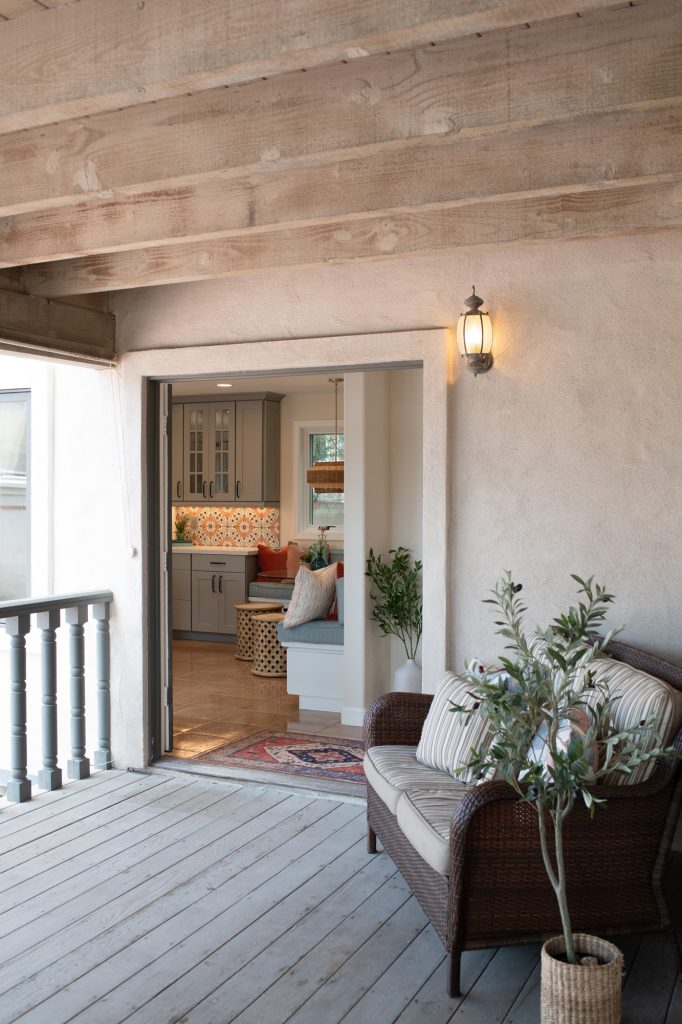
When renovating your Spanish Colonial home in San Diego, you must first know the materials and methods typically used in this architectural style. Preserving the historical charm while incorporating modern conveniences is essential in the renovation process.
Selecting the appropriate materials for your renovation is crucial for maintaining the home’s original character. Use natural wood and terracotta for flooring, beams, cabinetry, and other elements. Woodwork is a vital part of the Spanish Colonial style, giving the homes their distinctive antique appearance. It is essential to consider local artisans for any woodwork restoration, as they can replicate original designs and bring back the home’s authentic charm.
When planning exterior improvements, consider the characteristic white stucco walls, wrought iron details, and red clay-tiled roofs found in Spanish Colonial homes. Carefully weigh your decisions so that any updates made to the exterior blend seamlessly with the original architecture. Consulting with experienced professionals can help you make the right choices for your particular home.
Integrating modern conveniences and technology while preserving the historic character may seem challenging, but it is achievable with thoughtful planning. Incorporate energy-efficient appliances, lighting, and heating and cooling systems that don’t disrupt the aesthetic flow. You can also discreetly add smart home technology by placing components and wiring behind walls or inside cabinets, ensuring the tradition and charm remain undisturbed.
By carefully considering materials, craftsmanship, and modern updates, you can successfully renovate your Spanish Colonial home in San Diego while honoring its rich heritage and unique history.
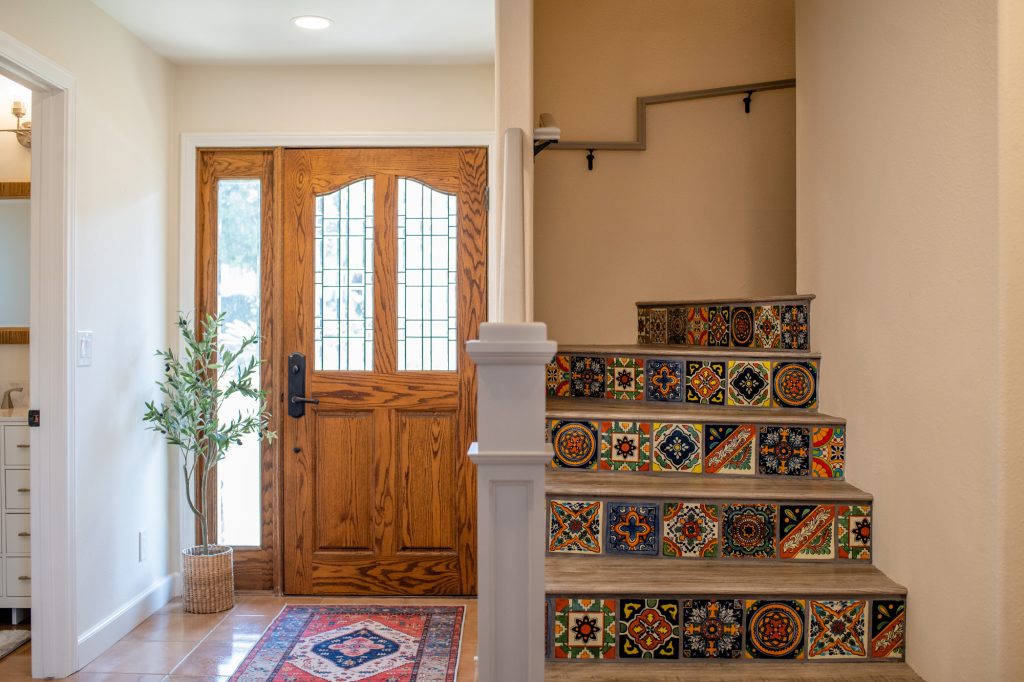
When renovating your Spanish Colonial home in San Diego, you’ll appreciate the unique features that set it apart from other styles. One of the key characteristics of a Spanish-style home is the use of stucco for its exterior walls. This versatile material is low-maintenance and energy-efficient since it helps keep your home cool during the hot summer months.
Arched doorways and windows are another iconic feature in Spanish Colonial architecture. These elegant curves provide a visually appealing contrast against the straight lines present in the home’s design and give your space a sense of sophistication. In addition, using white stucco and strategically placed windows allows for plenty of natural light, brightening up your home’s interior.
Moreover, Spanish Colonial homes often feature beautiful courtyards as central gathering spaces for family and friends. These outdoor areas provide a serene escape from daily life’s hustle and bustle while offering the perfect setting for entertaining guests.
Inside, you might find a grand fireplace that serves as a focal point in the living area and provides warmth during the colder months. Similarly, exposed rafters add an authentic touch to your home, speaking to its rich architectural history.
Regarding interior design, Spanish-style homes are known for embracing the natural materials and textures characteristic of the architecture. These elements, from terracotta flooring to wood beams and wrought iron accents, lend an unmistakable warmth and charm to your living spaces.
With careful planning and attention to these unique features, your San Diego kitchen remodel can fully embrace and enhance the beauty of your Spanish-style home, ensuring that you maintain its historical authenticity while updating it for modern living.
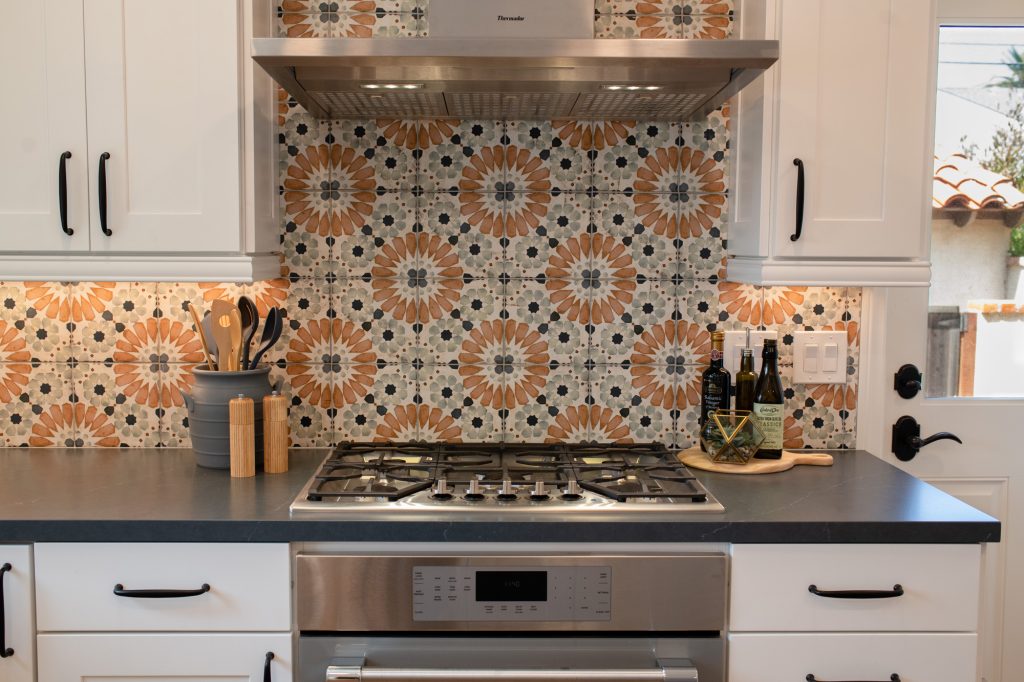
San Diego is a city steeped in architectural history, where diverse styles blend seamlessly to create a unique aesthetic. From Spanish Colonial Revival to Victorian and Craftsman homes, your journey in renovating a Spanish Colonial home in San Diego should begin with understanding the city’s architectural context.
The Spanish Colonial Revival style gained momentum in the 1920s following a successful display at the 1915 Panama-California Exposition. As you encounter this style, you’ll notice its charm, with features like red tile roofs, smooth stucco walls, and arched doorways.
Adjacent to the Spanish Colonial Revival, you’ll find other remarkable styles such as Queen Anne, Stick, Shingle, and Folk. Victorian homes, for example, are known for their intricate woodwork and ornamentation, while Craftsman bungalows showcase a more simplistic design with natural materials and hand-crafted details.
Some popular architectural styles that emerged after World War I include Ranch, Mid-Century Modern, and Folk. Ranch-style homes typically feature a single-story layout, low-pitched roofs, and spacious interiors. Mid-century Modern homes are known for their clean lines, open floor plans, and focus on indoor-outdoor living, whereas Folk-style homes reflect more straightforward, vernacular design principles.
San Diego’s impressive architectural spectrum doesn’t end there. If you’re looking to renovate a historic property in San Diego, it’s essential to consider the Mills Act. This state-wide program offers property tax savings for owners of historic homes who maintain and restore their properties.
By understanding the various architectural styles and historical context of San Diego, you can make more informed decisions when renovating your Spanish Colonial home. Keep in mind the significance of the styles surrounding your property, ensuring a seamless integration with the city’s unique architectural landscape.
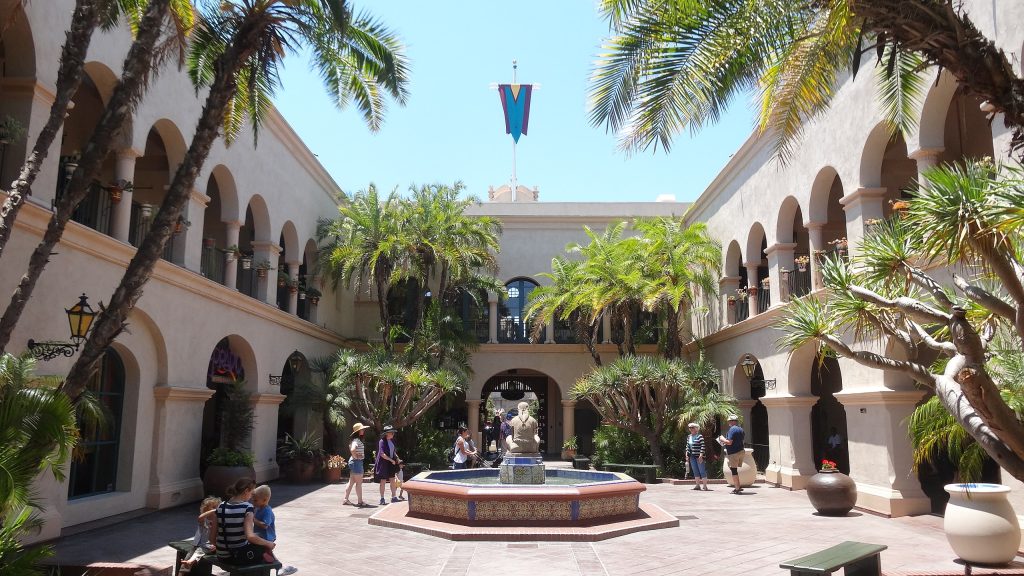
When renovating a Spanish Colonial home, preserving its unique character and architecture is essential. That includes maintaining the original elements, such as the arches, the use of wrought iron, and the clay tile roofs. Consult a professional experienced in historic home remodeling to ensure the most accurate and authentic renovation.
Permits may vary depending on your Spanish Colonial home’s specific renovation project and location. It’s essential to determine the required permits with your local city or county building department. Keep in mind that historic homes may also need a review from local historical preservation boards to ensure adherence to preservation guidelines.
Maintaining the authenticity of Spanish Colonial architecture involves preserving and restoring the original elements whenever possible. That includes respecting the original floor plan, showcasing the unique architectural details, and using traditional materials such as stucco and clay tiles. Consider consulting with a Spanish Colonial home expert to ensure your renovation stays true to the original style and design.
Traditional materials used in Spanish Colonial home renovations include stucco for exterior walls, clay tile roofs, wrought iron accents, and terracotta or stone flooring. Exterior paint colors are earthy tones that blend well with the natural surroundings. When updating or replacing materials, match the original materials as closely as possible to maintain the home’s authenticity.
Some common challenges during a Spanish Colonial home renovation include balancing modern amenities with historic preservation, finding skilled craftsmen familiar with the architecture, and addressing structural or age-related issues in the home. Working with a team of professionals experienced in historic home remodels is crucial to ensure that any challenges are addressed appropriately.
The cost of building or renovating a Spanish Colonial-style home can vary depending on materials, labor, and location. However, some aspects, like clay tile roofs and intricate wrought iron work, can be more expensive than their modern counterparts. As a result, it’s crucial to consider the overall budget when embarking on a renovation project for a Spanish Colonial home.

Kimberly Villa is a recognized expert in the Home Design and Remodeling industry. Her passion for the industry is matched only by her love for sharing insights, new trends, and design ideas. Kimberly’s expertise and enthusiasm shine through in her contributions to the Kaminskiy Design and Remodeling website blog, where she regularly shares valuable information with readers.